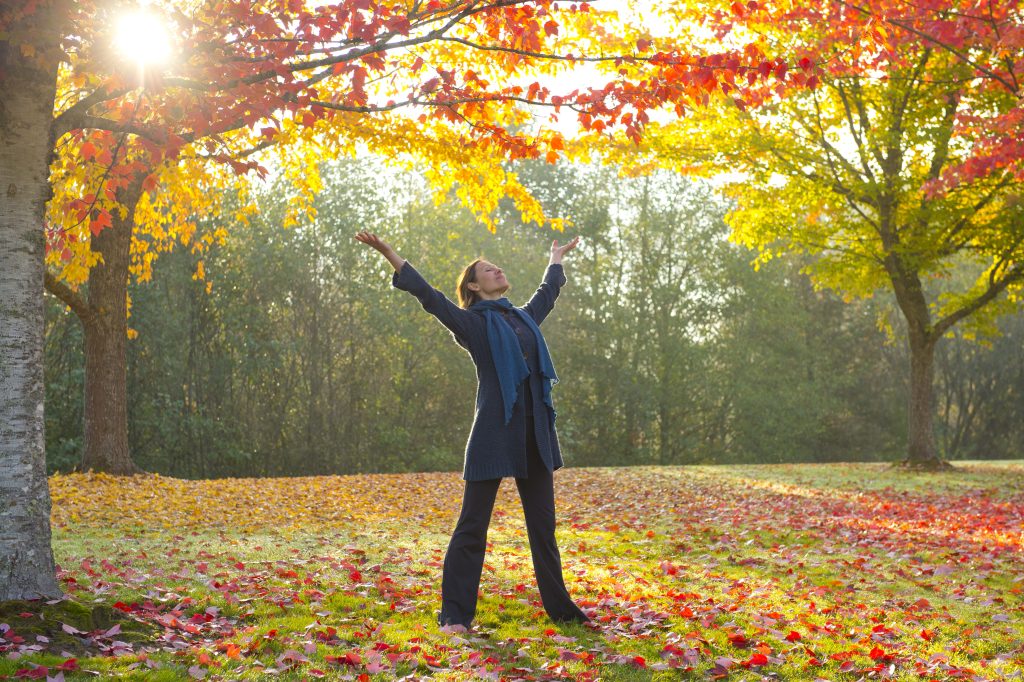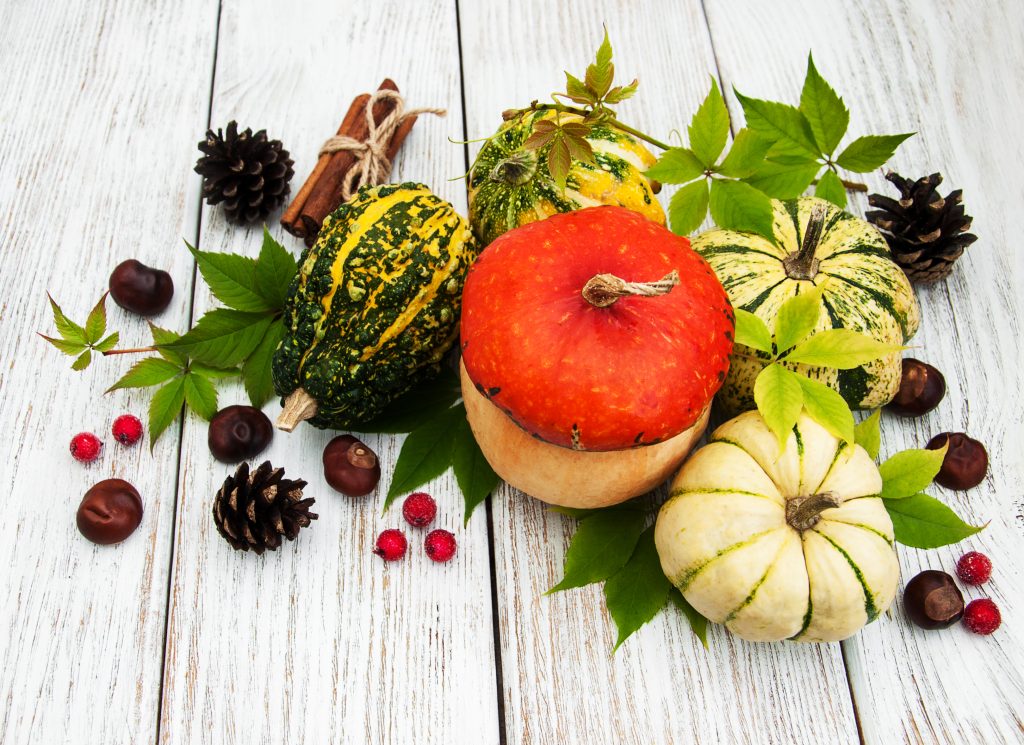For thousands of years, human beings lived in profound synchronicity with the changing seasons. Our ancestors planted and harvested according to seasonal cycles, adapted their shelter and clothing to weather patterns, and observed distinct rituals and practices as the year progressed. This wasn’t merely practical adaptation—it reflected an understanding that human wellbeing is intimately connected to the natural rhythms that surround us.
In today’s climate-controlled, artificially lit, 24/7 world, we’ve gained remarkable independence from seasonal constraints. Yet beneath our modern lifestyles, our bodies and minds continue to respond to seasonal shifts in ways both subtle and profound. The growing field of chronobiology—the study of biological rhythms—confirms what traditional knowledge systems have long maintained: humans are seasonal beings.
This article explores how we might reconnect with seasonal awareness to support our overall wellbeing. We’ll examine how different seasons affect human biology, explore traditional and contemporary seasonal wellness practices, and offer practical ways to align your wellness routines with the natural cycles of the year.
The Challenge of Seasonal Disconnection
Despite our technological buffers against the elements, many people experience distinct seasonal challenges:
- Winter blues and seasonal mood changes: Many experience lower energy and mood during darker months, with some developing more significant seasonal mood variations.
- Disrupted sleep cycles: Changing light patterns affect melatonin production and sleep quality throughout the year.
- Seasonal immune challenges: Cold and flu viruses circulate more readily in certain seasons, while other seasons bring allergens and different immune considerations.
- Temperature adaptation difficulties: Extreme heat or cold creates physiological stress for many people.
- Inconsistent energy levels: Fluctuations in daylight, temperature, and barometric pressure can affect energy and motivation.
These challenges often lead to frustration, particularly when we expect our bodies to function identically year-round. Many of us maintain rigid wellness routines that don’t account for these natural variations, potentially creating unnecessary struggle.
As one wellness practitioner observes: “We wouldn’t expect a garden to produce the same crops year-round, yet we often demand constant performance from ourselves regardless of season.”
Historical Perspectives on Seasonal Living
Before exploring contemporary approaches to seasonal wellness, let’s consider how various traditions have understood and worked with seasonal changes.
Traditional Wisdom Across Cultures
Many traditional medicine systems organised their understanding of health around seasonal principles:
Traditional Chinese Medicine (TCM) developed a sophisticated system relating seasons to different elements, organs, and wellness practices. For example, winter was associated with the water element and kidney energy, calling for more rest, introspection, and warming foods.
Ayurvedic medicine from India identified different doshas (constitutional types) that benefit from specific seasonal adjustments. The tradition offers detailed guidance for adapting diet, sleep, and daily activities through ritucharya, or seasonal routines.
Indigenous practices worldwide developed calendars that often included six or more seasons rather than just four, with specific food gathering, ceremonial activities, and wellness practices tied to each period.
European folk traditions marked seasonal transitions with festivals that served both communal and wellness functions—from spring cleaning rituals that freshened living spaces after winter confinement to harvest celebrations that preserved food for the scarcer months.
What unites these diverse approaches is recognition that human health is not static but exists in relationship with environmental changes. By working with these natural rhythms rather than against them, traditional cultures sought to maintain balance throughout the year.
The Science of Biological Rhythms
Modern research has confirmed many aspects of these traditional understandings through the study of chronobiology—particularly circadian rhythms (approximately 24-hour cycles) and circannual rhythms (yearly cycles).
Key scientific insights include:
- Hormonal fluctuations: Hormones like melatonin, cortisol, and even reproductive hormones show seasonal patterns affected by light exposure.
- Metabolic changes: Research suggests human metabolism may naturally shift slightly between seasons, with potential implications for weight management and energy levels.
- Immune system variation: Studies indicate seasonal variations in immune function, with different types of immune activity predominating in different seasons.
- Genetic expression: Fascinating research has revealed that thousands of human genes show seasonal patterns of expression, suggesting our biology is programmed for seasonal adaptation.
These findings suggest that some seasonal variations in wellbeing aren’t problems to overcome but natural adaptations to be understood and worked with appropriately.

Understanding Seasonal Effects on Wellbeing
To adapt wellness practices effectively, we first need to understand how different seasons affect our physiology and psychology.
Light Exposure and Hormonal Patterns
Perhaps the most significant seasonal variable is light exposure. Changing day length affects several biological processes:
- Melatonin production: This sleep-regulating hormone is produced in darkness and suppressed by light, particularly blue wavelengths. Shorter winter days can extend melatonin production, affecting energy and mood.
- Cortisol rhythms: The body’s primary stress hormone normally peaks in the morning to energise us for the day. Seasonal light changes can affect this rhythm.
- Vitamin D synthesis: The body produces vitamin D when skin is exposed to UVB radiation from sunlight—a process that varies significantly by season, latitude, and skin tone.
- Serotonin regulation: This neurotransmitter associated with mood and wellbeing appears to be affected by light exposure, with potential seasonal implications.
These light-dependent processes form the foundation of many seasonal wellness considerations.
Temperature Regulation and Energy Expenditure
Seasonal temperature variations create different demands on the body:
- Thermoregulation: The body expends energy maintaining core temperature—more in extreme heat or cold.
- Brown fat activation: Colder temperatures activate brown adipose tissue, which burns calories to generate heat in a process called thermogenesis.
- Hydration needs: Sweat rates and fluid requirements change with temperature and humidity levels.
- Movement patterns: Weather naturally influences physical activity types, duration, and intensity.
These temperature-related factors influence energy levels, appetite, and overall wellness throughout the year.
Seasonal Foods and Nutritional Considerations
Before global supply chains, humans ate seasonally by necessity. This created natural variations in nutritional intake:
- Micronutrient diversity: Different growing seasons provided varying nutrient profiles throughout the year.
- Carbohydrate availability: In many climate zones, carbohydrate-rich foods were naturally more abundant in late summer and autumn.
- Preservation methods: Traditional food preservation created fermented foods with different nutritional properties than fresh foods.
While modern food systems offer year-round access to most foods, there may be benefits to maintaining some seasonal eating patterns aligned with local growing seasons.
Seasonal Wellness Practices: A Year-Round Guide
With this foundation of understanding seasonal effects, let’s explore practical approaches for each season. While individual needs vary based on climate, latitude, and personal constitution, these general principles can be adapted to different circumstances.
Summer Wellness Considerations
The longest days and warmest temperatures create specific wellness considerations:
Hydration and Electrolyte Balance
Higher temperatures increase fluid loss through sweat, potentially affecting:
- Overall hydration status
- Electrolyte balance (sodium, potassium, magnesium, etc.)
- Cellular function and energy levels
Practical approaches: Increasing water intake, consuming electrolyte-rich foods like leafy greens and fruits, and paying attention to hydration status become particularly important.
Sun Exposure: Balancing Benefits and Protection
Sunlight offers benefits including vitamin D production and regulation of circadian rhythms, but also presents challenges:
- UVA and UVB radiation can damage skin
- Heat stress can affect physical performance
- Eye protection becomes important
Practical approaches: Strategic sun exposure during less intense hours (before 10 am and after 4 pm), appropriate protective clothing, and suitable skin protection methods help balance these considerations.
Sleep During Longer Daylight Hours
Extended daylight can affect sleep patterns through:
- Delayed melatonin production
- Higher evening temperatures
- Social activities extending later
Practical approaches: Creating darker sleep environments, cooling the bedroom, maintaining consistent sleep schedules, and winding down intentionally can support summer sleep quality.
Heat-Appropriate Movement Practices
Exercise in summer heat requires adaptation:
- Greater cardiovascular stress during heat
- Increased risk of dehydration
- Changed perception of exertion
Practical approaches: Exercising during cooler parts of the day, reducing intensity during heat waves, choosing water-based activities, and adjusting expectations can support consistent movement.

Autumn Wellness Approaches
As light and temperature gradually decrease, autumn offers a natural transition period:
Adapting to Changing Light
The most notable autumn change is decreasing daylight, which affects:
- Circadian rhythm adjustments
- Mood and energy fluctuations
- Sleep-wake timing
Practical approaches: Spending time outdoors during daylight hours, gradually adjusting sleep schedules, and using light effectively can ease this transition.
Seasonal Food Transitions
Traditional autumn harvests offer specific nutritional profiles:
- Root vegetables with complex carbohydrates
- Tree fruits with unique phytonutrients
- Nuts and seeds with healthy fats
Practical approaches: Incorporating locally seasonal foods, learning preservation methods, and gradually shifting toward warming cooking methods align with this transitional season.
Preparing for Winter
Autumn traditionally served as preparation time for the more challenging winter season:
- Building physical reserves
- Establishing supportive habits
- Creating environmental preparations
Practical approaches: Establishing sustainable movement routines, organizing living spaces, and setting intentions for winter months can make the next seasonal transition smoother.
Winter Wellness Strategies
The coldest, darkest season presents distinct wellness considerations:
Optimising Light Exposure
Limited natural light affects:
- Vitamin D synthesis
- Circadian rhythm regulation
- Mood and energy levels
Practical approaches: Maximising exposure to morning light, spending time outdoors during daylight hours when possible, and creating well-lit indoor environments can support wellbeing during darker months.
Movement During Colder Weather
Winter conditions can limit physical activity through:
- Cold exposure discomfort
- Reduced outdoor access
- Safety concerns (ice, shorter daylight)
Practical approaches: Indoor movement options, appropriate cold-weather gear, home-based routines, and adjusting expectations can maintain physical wellness during winter.
Traditional Warming Practices
Cultures worldwide developed warming practices for winter wellbeing:
- Specific food preparation methods
- Hot baths and other warming practices
- Community gatherings to share warmth
Practical approaches: Incorporating warm herbal teas, hot baths or saunas where available, warming spices in cooking, and layered clothing can support comfort in colder conditions.
Social Connection in Winter
Winter naturally encourages more indoor time, affecting:
- Social interaction patterns
- Community connection
- Mood support through relationship
Practical approaches: Planning regular social connections, creating cozy gathering environments, and using technology to maintain relationships can counterbalance winter’s tendency toward isolation.
Spring Wellness Practices
As light and temperature increase, spring brings renewal and transition:
“Spring Cleaning” for Body and Environment
Traditional spring cleaning practices recognized the psychological and practical benefits of:
- Refreshing living spaces after winter confinement
- Opening windows for improved air quality
- Clearing accumulated items
Practical approaches: Gradually cleaning and refreshing living spaces, bringing nature indoors through plants or natural materials, and simplifying possessions can support wellbeing during this transitional season.
Allergen Awareness
For many, spring brings allergen challenges:
- Tree and grass pollen increases
- Mold spores become more prevalent
- Changing air quality
Practical approaches: Tracking local pollen counts, considering air filtration, and adapting outdoor timing can make spring more comfortable for those with seasonal sensitivities.
Gradual Increased Activity
Spring invites renewed physical activity:
- More outdoor opportunity
- Natural motivation increase
- Longer daylight for activity
Practical approaches: Gradually increasing movement, reintroducing outdoor activities mindfully, and aligning with natural energy shifts support a balanced approach to spring wellness.
Counterintuitive Seasonal Wellness Perspectives
Some approaches to seasonal wellness challenge conventional thinking about health practices:
The Potential Benefits of Seasonal Variation
While consistency is often emphasized in wellness discussions, some research suggests benefits to seasonal variation:
- Hormetic stress responses: Mild seasonal stressors like temperature fluctuation may create beneficial adaptations
- Metabolic flexibility: Varying eating patterns seasonally might support metabolic health
- Natural energy fluctuation: Allowing for different energy levels and sleep needs seasonally might be more sustainable than expecting constant performance
These perspectives suggest working with natural rhythms rather than maintaining identical routines year-round.
Individual Variation in Seasonal Response
While general seasonal patterns exist, individual responses vary considerably:
- Genetic factors influence seasonal sensitivity
- Personal history and experiences shape seasonal reactions
- Geographic origin may affect seasonal adaptation
This variation means that generic seasonal advice requires personalisation—what feels balancing for one person might not for another.
Challenging the “Consistency at All Costs” Mindset
Modern productivity culture often prioritizes consistent output regardless of season. Alternative perspectives suggest:
- Different seasons might naturally support different types of activities
- Productivity rhythms could be aligned with seasonal energy
- Accepting seasonal variation might reduce unnecessary struggle
This approach invites us to consider whether fighting seasonal changes creates unnecessary stress and whether adaptation might prove more effective.
Creating Your Personal Seasonal Wellness Approach
Moving from general principles to personal practice requires individual observation and experimentation:
Seasonal Self-Observation
Begin by noticing your own seasonal patterns:
- Keep a simple journal noting energy, mood, sleep, and appetite through seasons
- Observe which activities feel naturally aligned with different times of year
- Notice seasonal challenges without immediately judging them as problems
This awareness creates the foundation for intentional seasonal adaptation.
Environmental Adjustments
Consider how your environment might be adjusted seasonally:
- Lighting: Changing light sources, intensity, and timing seasonally
- Temperature: Adapting heating, cooling, and clothing layers
- Nature connection: Finding season-appropriate ways to connect with natural environments
- Home atmosphere: Seasonal adjustments to living spaces that support wellbeing
These environmental factors provide the context for seasonal wellness practices.
Movement Through the Seasons
Physical activity can be adapted to seasonal conditions:
- Varying intensity and type with energy levels and weather
- Considering indoor/outdoor balance appropriate to the season
- Adapting timing to make use of optimal daylight and temperature
- Exploring traditionally seasonal activities that align with local conditions
This flexible approach maintains consistent movement while honoring seasonal realities.

Seasonal Food Awareness
Food choices can acknowledge seasonal patterns:
- Exploring locally seasonal produce when available
- Adjusting cooking methods seasonally (more raw foods in summer, more warming preparation in winter)
- Noticing how food preferences naturally shift with seasons
- Learning traditional seasonal food wisdom from various cultures
This approach connects eating patterns with natural cycles while maintaining nutritional adequacy.
Future Directions in Seasonal Wellness
As interest in chronobiology and seasonal living grows, several emerging trends are worth watching:
Climate Change Implications
Changing climate patterns may affect seasonal wellness approaches:
- Less predictable weather patterns requiring more adaptability
- Shifting growing seasons affecting traditional seasonal eating
- Potentially different seasonal health challenges
These changes may require more flexible and responsive seasonal wellness strategies.
Technology for Seasonal Tracking
New technologies offer ways to understand personal seasonal patterns:
- Wearable devices tracking sleep, activity, and physiological measures across seasons
- Apps helping identify patterns in mood, energy, and habits
- Smart home technology that can adjust environments seasonally
These tools may offer insights for more personalized seasonal adaptations.
Renewed Interest in Traditional Seasonal Wisdom
Cultural traditions contain sophisticated seasonal wellness knowledge:
- Growing research interest in traditional seasonal practices
- Communities reviving seasonal celebrations and rituals
- Increased sharing of cross-cultural seasonal wisdom
This renewed interest may uncover valuable approaches to seasonal wellbeing that complement contemporary understanding.
Conclusion: Dancing with the Seasons
Living well through the seasons isn’t about fighting natural rhythms or surrendering entirely to them—it’s about finding a dynamic balance that honors both biological realities and modern circumstances. This seasonal awareness invites us to:
- Recognize that change, not stasis, is the natural order
- Approach seasonal shifts with curiosity rather than resistance
- Develop flexibility in our wellness practices
- Connect more deeply with the natural world around us
- Respect the wisdom of traditional seasonal knowledge while integrating contemporary understanding
By developing this seasonal intelligence, we potentially reduce unnecessary struggle against natural patterns while creating more sustainable, enjoyable approaches to year-round wellbeing.
As you consider your own seasonal wellness journey, start simply. Notice how different seasons affect you personally. Experiment with small seasonal adjustments rather than dramatic changes. Be patient with the process of reconnecting with natural rhythms after our culturally encouraged disconnection from them.
Most importantly, approach seasonal living not as another demanding wellness “should,” but as an opportunity to align more gracefully with the world around you. The seasons will change whether we acknowledge them or not—the question is whether we’ll fight those changes or learn to dance with them.
In future articles, we’ll explore specific seasonal wellness practices in greater detail, examine traditional seasonal wisdom from various cultures, and consider how seasonal awareness might complement other aspects of a balanced lifestyle.
This article is provided for educational purposes only and does not constitute medical advice. Consult with qualified healthcare providers regarding any health concerns or conditions. Alternative Health Hub provides information about complementary health approaches as part of a holistic perspective on wellbeing.
